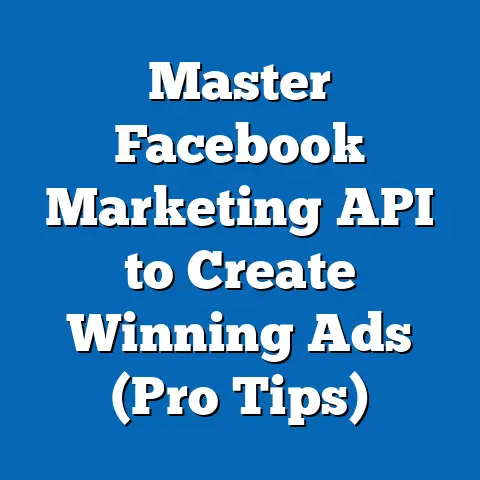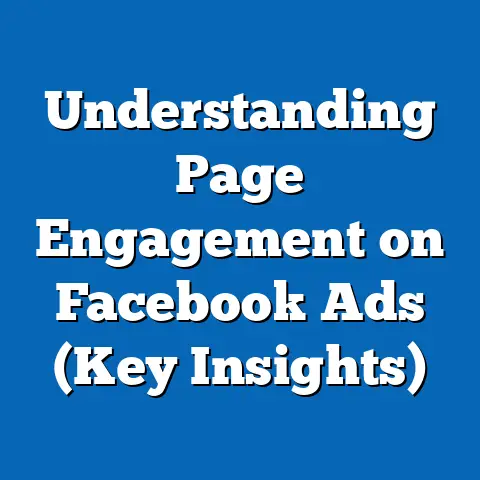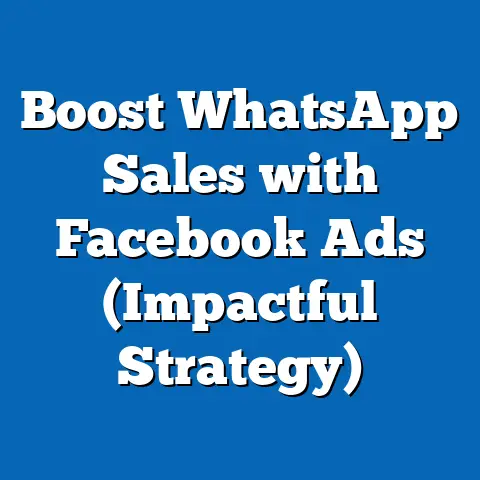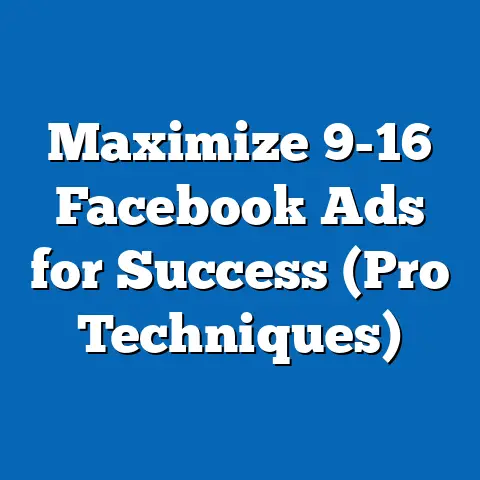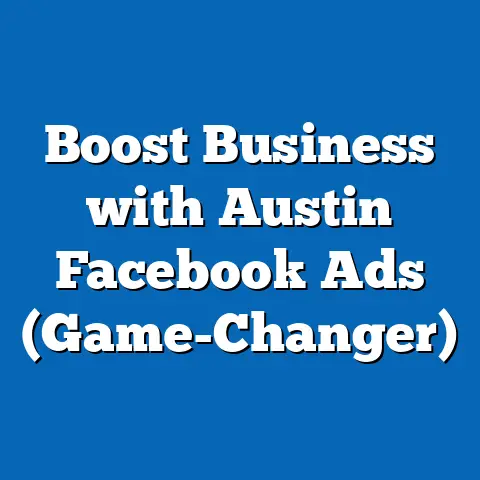Unlock Facebook Ads on Page (Expert Strategy Guide)
What if you could effortlessly transform your Facebook page into a powerful revenue-generating machine through expertly crafted ads? That’s the dream, right? For years, I’ve been helping businesses, both big and small, turn that dream into reality. Facebook advertising can feel overwhelming, but trust me, with the right strategy, it’s an incredibly effective way to reach your target audience, build brand awareness, and drive sales. In this guide, I’m going to share my expert strategies for unlocking the true potential of Facebook ads on your page.
Understanding Facebook Ads
Let’s start with the basics. Facebook ads are paid messages that businesses use to reach specific audiences on Facebook. They appear in various places, including the news feed, right column, and even within Messenger. Unlike organic posts, which are only seen by your existing followers (and even then, only a fraction), ads allow you to target users based on demographics, interests, behaviors, and more.
Why Facebook Ads Matter
Facebook is a behemoth. With billions of active users, it’s a massive marketplace waiting to be tapped. But it’s not just about the sheer numbers. Here’s why Facebook ads are so crucial for modern businesses:
- Precise Targeting: As I mentioned, Facebook’s targeting capabilities are incredibly granular. You can reach people who are likely to be interested in your products or services, minimizing wasted ad spend.
- Measurable Results: Unlike traditional advertising methods, Facebook ads provide detailed analytics, allowing you to track your performance and optimize your campaigns in real-time.
- Cost-Effective: Compared to other advertising channels, Facebook ads can be surprisingly affordable, especially when you nail your targeting and ad creative.
- Brand Building: Even if users don’t immediately convert, seeing your ads can increase brand awareness and recognition, leading to future sales.
- Scalability: Once you find a winning formula, you can easily scale your campaigns to reach a wider audience and generate even more leads and sales.
The Proof is in the Pudding: Facebook Ads Statistics
Don’t just take my word for it. The numbers speak for themselves. According to recent industry reports:
- Facebook boasts over 2.9 billion monthly active users.
- The average click-through rate (CTR) for Facebook ads is around 0.9%.
- Facebook advertising revenue continues to grow year over year, indicating its continued importance for businesses.
- Businesses see, on average, a 9.21x return on ad spend when advertising on Facebook.
These statistics highlight the immense potential of Facebook ads when used strategically.
Key Takeaway: Facebook ads are a powerful tool for reaching your target audience, building brand awareness, and driving sales. Their precise targeting capabilities and measurable results make them a must-have for any modern business.
Setting Up Your Facebook Page for Advertising
Before diving into ad creation, you need to ensure your Facebook page is properly set up for advertising success. Think of your page as the landing page for your ads – it’s where users will go to learn more about your business after clicking on your ad.
Prerequisites for Running Facebook Ads
First things first, you need a few things in place:
- A Facebook Business Page: This is non-negotiable. You can’t run ads from a personal profile. If you don’t have one already, create one. It’s free and easy.
- A Facebook Ad Account: This is where you’ll manage your ad campaigns, set your budget, and track your results. You can create an ad account through your Business Manager.
- Payment Information: Facebook needs a way to charge you for your ads, so make sure you have a valid credit card or PayPal account connected to your ad account.
Optimizing Your Facebook Page for Ad Performance
Now that you have the basics covered, let’s optimize your page for maximum impact:
- Profile and Cover Images: Use high-quality images that represent your brand and are visually appealing. Your profile image should be easily recognizable, like your logo. Your cover image should showcase your products, services, or brand personality.
- Call-to-Action (CTA) Button: Choose a CTA button that aligns with your advertising goals. Options include “Shop Now,” “Learn More,” “Sign Up,” “Contact Us,” and more. Make it easy for users to take the next step.
- Page Information: Fill out all the relevant information about your business, including your website, address, phone number, and hours of operation. This builds trust and credibility.
- About Section: Craft a compelling “About” section that tells your brand story and highlights your unique value proposition. Explain what you do, who you serve, and why they should choose you.
Defining Your Target Audience with Facebook Insights
Understanding your target audience is crucial for successful advertising. Facebook Insights provides valuable data about your existing followers, including their demographics, interests, and behaviors. Use this information to create detailed audience personas that will inform your ad targeting strategy.
I once worked with a local bakery that was struggling to attract new customers. By analyzing their Facebook Insights data, we discovered that their existing followers were primarily women aged 25-45 who were interested in baking, cooking, and healthy eating. We used this information to create targeted ads that resonated with this specific audience, resulting in a significant increase in foot traffic and online orders.
Key Takeaway: Setting up and optimizing your Facebook page is essential for advertising success. Ensure you have the necessary prerequisites in place, optimize your page elements, and define your target audience using Facebook Insights.
Types of Facebook Ads
Facebook offers a wide variety of ad formats to suit different advertising goals and creative styles. Let’s explore some of the most popular options:
Image Ads
These are the simplest and most common type of Facebook ad. They consist of a single image, ad copy, and a call-to-action button. Image ads are great for showcasing your products, services, or brand personality.
Video Ads
Video ads are more engaging than image ads and can be used to tell a story, demonstrate a product, or share a testimonial. They can be short and sweet or longer and more in-depth.
Carousel Ads
Carousel ads allow you to showcase multiple images or videos in a single ad unit. Users can scroll through the carousel to see different products, features, or benefits.
Collection Ads
Collection ads are designed for e-commerce businesses. They showcase a catalog of products in a visually appealing format, making it easy for users to browse and purchase items directly from Facebook.
Lead Ads
Lead ads are designed to capture leads directly from Facebook. They allow users to submit their contact information without leaving the platform, making it easy for businesses to generate leads for their sales team.
Instant Experience Ads
Instant Experience ads (formerly known as Canvas ads) are full-screen, mobile-optimized ads that provide an immersive and interactive experience. They can include images, videos, carousels, and more.
Choosing the Right Ad Format
The best ad format for your business will depend on your advertising goals, target audience, and creative resources. Here’s a quick guide:
- Brand Awareness: Video ads, Instant Experience ads
- Lead Generation: Lead ads, Video ads
- Website Traffic: Image ads, Carousel ads, Video ads
- Sales: Collection ads, Carousel ads, Image ads
Key Takeaway: Facebook offers a variety of ad formats to suit different advertising goals and creative styles. Choose the format that best aligns with your objectives and target audience.
Crafting Compelling Ad Content
No matter which ad format you choose, your ad content is what will ultimately determine its success. Compelling ad content should be attention-grabbing, relevant, and persuasive.
Attention-Grabbing Headlines and Visuals
Your headline and visual are the first things users will see, so make them count. Use strong, action-oriented language in your headline and choose visuals that are high-quality, eye-catching, and relevant to your target audience.
The Power of Storytelling
People connect with stories. Use your ad content to tell a story that resonates with your target audience. Share a customer testimonial, highlight a problem you solve, or showcase the transformation your product or service provides.
Persuasive Ad Copy
Your ad copy should be clear, concise, and persuasive. Highlight the benefits of your product or service, address any potential objections, and include a strong call-to-action that tells users what you want them to do.
Key Takeaway: Compelling ad content is essential for driving engagement and conversions. Use attention-grabbing headlines and visuals, tell a story that resonates with your target audience, and write persuasive ad copy that includes a strong call-to-action.
Targeting Your Audience
One of the biggest advantages of Facebook ads is their precise targeting capabilities. You can target users based on a wide range of factors, including:
Demographic Targeting
Target users based on age, gender, location, education, job title, and more.
Interest Targeting
Target users based on their interests, hobbies, and passions. Facebook gathers this information from the pages they like, the groups they join, and the content they engage with.
Behavior Targeting
Target users based on their online behavior, such as their purchase history, device usage, and travel habits.
Custom Audiences
Create custom audiences based on your existing customer data, such as email lists, website visitors, or app users. This allows you to retarget users who have already interacted with your business.
Lookalike Audiences
Create lookalike audiences based on your existing custom audiences. Facebook will identify users who share similar characteristics and behaviors, allowing you to reach new potential customers.
The Importance of Audience Segmentation
Don’t try to target everyone with the same ad. Segment your audience based on their demographics, interests, and behaviors, and create ads that are tailored to each segment. This will increase the relevance of your ads and improve your results.
Key Takeaway: Facebook’s precise targeting capabilities allow you to reach the right people with the right message. Segment your audience and create ads that are tailored to each segment for maximum impact.
Setting a Budget and Bidding Strategy
Setting a budget and bidding strategy is crucial for managing your ad spend and maximizing your ROI.
Determining an Appropriate Budget
There’s no one-size-fits-all answer to how much you should spend on Facebook ads. It depends on your advertising goals, target audience, and budget constraints. However, here are a few guidelines:
- Start Small: Begin with a small budget and gradually increase it as you see results.
- Consider Your Customer Lifetime Value: How much is a customer worth to your business over their lifetime? This will help you determine how much you’re willing to spend to acquire a new customer.
- Use a Daily or Lifetime Budget: Facebook allows you to set a daily budget or a lifetime budget for your campaigns. A daily budget will spread your spend evenly throughout the day, while a lifetime budget will spend your budget over the entire duration of your campaign.
Understanding Bidding Strategies
Facebook offers several bidding strategies, including:
- Cost Per Click (CPC): You pay each time someone clicks on your ad.
- Cost Per Impression (CPM): You pay for every 1,000 impressions your ad receives.
- Cost Per Acquisition (CPA): You pay each time someone takes a desired action, such as making a purchase or filling out a form.
The best bidding strategy for your business will depend on your advertising goals and budget.
Key Takeaway: Setting a budget and bidding strategy is crucial for managing your ad spend and maximizing your ROI. Start small, consider your customer lifetime value, and choose a bidding strategy that aligns with your advertising goals.
Analyzing and Optimizing Ad Performance
Once your ads are running, it’s essential to track your performance and make adjustments as needed.
Key Metrics to Track
Here are some of the key metrics to track for measuring ad success:
- Click-Through Rate (CTR): The percentage of people who see your ad and click on it.
- Conversion Rate: The percentage of people who click on your ad and take a desired action, such as making a purchase or filling out a form.
- Cost Per Acquisition (CPA): The cost of acquiring a new customer.
- Return on Ad Spend (ROAS): The amount of revenue you generate for every dollar you spend on advertising.
A/B Testing
A/B testing involves creating two versions of an ad and testing them against each other to see which one performs better. You can A/B test different headlines, visuals, ad copy, targeting options, and bidding strategies.
Key Takeaway: Analyzing and optimizing ad performance is crucial for maximizing your ROI. Track key metrics, conduct A/B testing, and make data-driven decisions to improve your results.
Common Mistakes to Avoid
Even experienced marketers make mistakes when running Facebook ads. Here are some common pitfalls to avoid:
- Poor Targeting: Targeting the wrong audience is a surefire way to waste your ad spend.
- Boring Ad Creative: If your ads aren’t visually appealing or engaging, people will simply scroll past them.
- Lack of a Clear Call-to-Action: Tell people what you want them to do.
- Ignoring Mobile Users: Most Facebook users access the platform on their mobile devices, so make sure your ads are optimized for mobile.
- Not Tracking Your Results: If you’re not tracking your results, you won’t know what’s working and what’s not.
Key Takeaway: Avoid common mistakes by targeting the right audience, creating engaging ad creative, including a clear call-to-action, optimizing for mobile, and tracking your results.
Emerging Trends in Facebook Advertising
The world of Facebook advertising is constantly evolving. Here are some emerging trends to watch:
- Augmented Reality (AR) Ads: AR ads allow users to interact with your products in a virtual environment.
- Shopping Ads: Shopping ads make it easy for users to purchase products directly from Facebook.
- Influencer Collaborations: Partnering with influencers can help you reach a wider audience and build trust with potential customers.
- AI-Powered Advertising: Facebook is increasingly using artificial intelligence to optimize ad campaigns and improve targeting.
Key Takeaway: Stay ahead of the curve by embracing emerging trends in Facebook advertising.
Conclusion
So, can you effortlessly transform your Facebook page into a powerful revenue-generating machine through expertly crafted ads? Absolutely! By understanding the fundamentals of Facebook advertising, optimizing your page, crafting compelling ad content, targeting the right audience, setting a budget and bidding strategy, analyzing your performance, and avoiding common mistakes, you can unlock the full potential of Facebook ads and achieve your business goals. The journey may have its challenges, but the rewards of reaching a massive, engaged audience are well worth the effort. Now, go out there and start experimenting! The world of Facebook advertising awaits.

